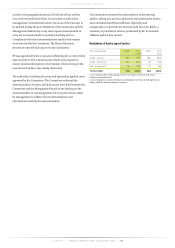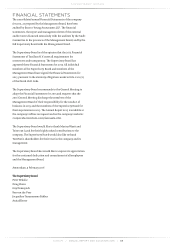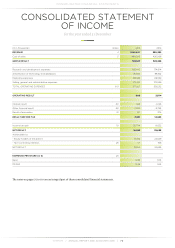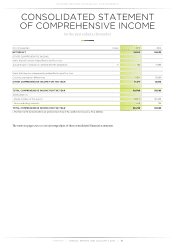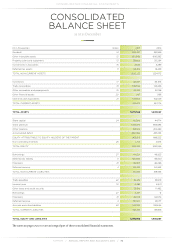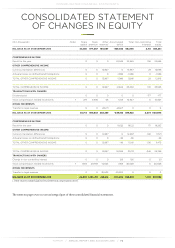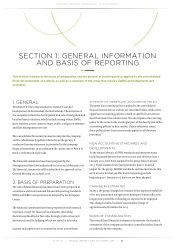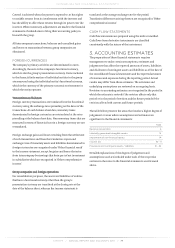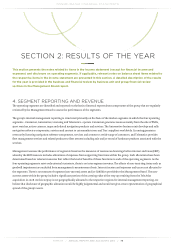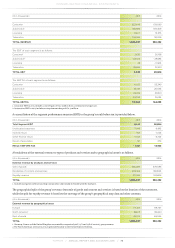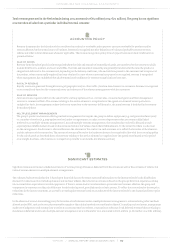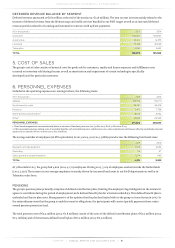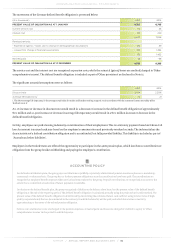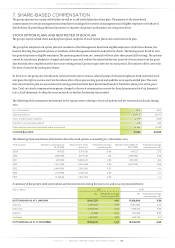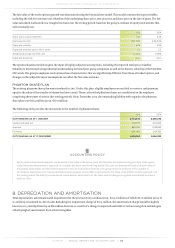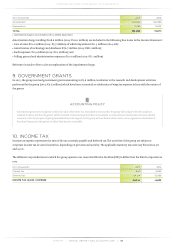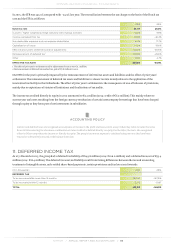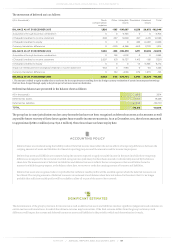TomTom 2015 Annual Report Download - page 78
Download and view the complete annual report
Please find page 78 of the 2015 TomTom annual report below. You can navigate through the pages in the report by either clicking on the pages listed below, or by using the keyword search tool below to find specific information within the annual report.
CONSOLIDATED FINANCIAL STATEMENTS
TOMTOM / ANNUAL REPORT AND ACCOUNTS 2015 / 77
Control is achieved when the parent is exposed to, or has rights
to variable returns from its involvement with the investee and
has the ability to affect those returns through its power over the
investee. Where necessary, adjustments are made to the financial
statements of subsidiaries to bring their accounting policy in
line with the group.
All intercompany transactions, balances and unrealised gains
and losses on transactions between group companies are
eliminated.
FOREIGN CURRENCIES
The company's primary activities are denominated in euros.
Accordingly, the euro is the company's functional currency,
which is also the group's presentation currency. Items included
in the financial information of individual entities in the group
are measured using the individual entity's functional currency,
which is the currency of the primary economic environment in
which the entity operates.
Transactions and balances
Foreign currency transactions are translated into the functional
currency using the exchange rates prevailing on the dates of the
transactions. At each balance sheet date, monetary items
denominated in foreign currencies are retranslated at the rates
prevailing at the balance sheet date. Non-monetary items that are
measured in terms of historical cost in a foreign currency are not
retranslated.
Foreign exchange gains and losses resulting from the settlement
of such transactions and from the translation at year-end
exchange rates of monetary assets and liabilities denominated in
foreign currencies are recognised under 'Other financial result'
in the income statement, except for gains and losses that arise
from intercompany borrowings that form part of net investment
in subsidiaries which are recognised in 'Other comprehensive
income'.
Group companies and foreign operations
For consolidation purposes, the assets and liabilities of entities
that have a functional currency other than the group's
presentation currency are translated at the closing rate at the
date of the balance sheet, whereas the income statement is
translated at the average exchange rate for the period.
Translation differences arising thereon are recognised in 'Other
comprehensive income'.
CASH FLOW STATEMENTS
Cash flow statements are prepared using the indirect method.
Cash flows from derivative instruments are classified
consistently with the nature of the instrument.
3. ACCOUNTING ESTIMATES
The preparation of these financial statements requires
management to make certain assumptions, estimates and
judgements that affect the reported amounts of assets, liabilities
and disclosure of contingent assets and liabilities as of the date of
the consolidated financial statements and the reported amounts
of revenues and expenses during the reporting period. Actual
results may differ from those estimates. The estimates and
underlying assumptions are reviewed on an ongoing basis.
Revisions to accounting estimates are recognised in the period in
which the estimate is revised if the revision affects only that
period or in the period of revision and the future periods if the
revision affects both current and future periods.
The table below presents the areas that involve a higher degree of
judgement or areas where assumptions and estimates are
significant to the financial statements:
Note
Revenue recognition 4
Internally generated intangible assets 12
Impairment of non-financial assets 14
Income tax 10 - 11
Provisions and contingent assets / liabilities 31 - 32
Detailed explanations of the degree of judgement and
assumptions used are included under each of the respective
sections in the notes to the financial statements as referenced
above.


